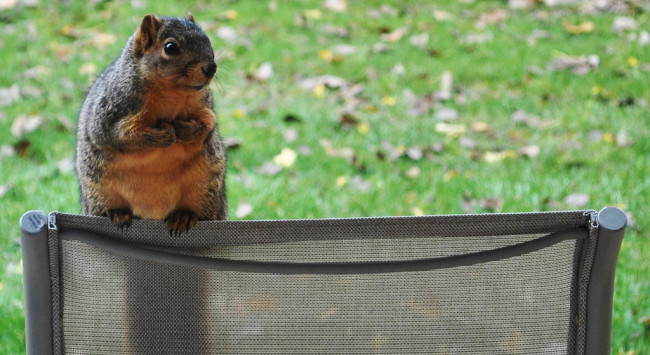What's making that scratching noise in my apartment wall? Who pays to make it go away?

Not the kind of guest you want to host.
iStock
Pests of any kind are never fun to deal with, but there's something particularly disturbing about those you can hear, but can't see. Whether you hear the pitter patter of something overhead in the ceiling, or scratching and rustling in the wall, there's a horror movie/psychological thriller aspect to the invasion.
If you're a renter, you may be relieved to find that your landlord has certain responsibilities here. It helps if you can identify where the sound is coming from (to avoid ripping unnecessary holes in the wall to free the animal) and what kind of animal it is (so you can make sure your landlord hires the right kind of animal removal specialist. Read on for how to identify what's making that scratching noise.
How did it get there?
John Terpo, owner of pest removal business Trapper John, says that buildings with problems due to poor maintenance, such as holes in the roof, are prime targets for animal intrusion, as they seek out places to nest and have babies, which might be adorable if it wasn't in your wall. Legally, it’s your landlord’s job to keep your place livable.
“The landlord is responsible for maintaining the premises free from rodent and insect infestation as part of the warranty of habitability,” says Adam Stone of The Stone Law Firm.
What is it, and what it is doing?
Your primary objective is no doubt to get whatever it is out of there, but if it’s of interest, the intruder could be any number of animals, including mice, rats, raccoons, squirrels, possums and even birds. Terpo says that birds, of course, will make a fluttering noise, while the rest will do more scratching. Raccoons will also make vocal noises, making them easy to identify. The pest Terpo deals with most often? Squirrels.
If the noise is limited to one place, it’s possible the animal is stuck, and panicking; if it moves around, it’s more likely that the creature is living in the ceiling or wall cavity. (Terpo says that it’s even possible that the visitor has made a nest and is having babies, possibly two litters a year.)
How do I get it out —and who pays for it?
It depends on what you’ve got. “The landlord should be notified about any suspected pests,” says Stone. “Hopefully the landlord already has a regular extermination schedule and maybe just needs to increase the frequency of those treatments.”
If you’re dealing with something bigger than mice, you may need to call an animal removal service such as Trapper John, and yes, they may need to cut open your wall or ceiling.
Will your renters insurance help pay for it? Probably not, according to Jeffrey Schneider of Gotham Brokerage (a Brick Underground sponsor).
“Generally, vermin and insect damage is excluded from insurance, although some policies may throw in a minimal token coverage,” he says. “A rat gnawing through your wires is not covered...But if there is an ensuing fire, that is covered.”
But here’s some good news: Terpo reports that when he’s done work in New York City buildings, it’s usually the board that pays him at a co-op, and the landlord in a rental building.
But the key thing to remember when dealing with trapped wild animals, is that it’s best to let professionals handle the situation. You can find more on dealing with unwelcome guests here.
You Might Also Like

























